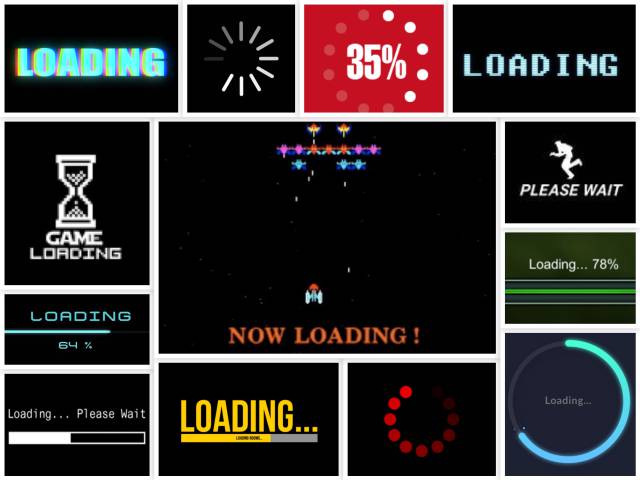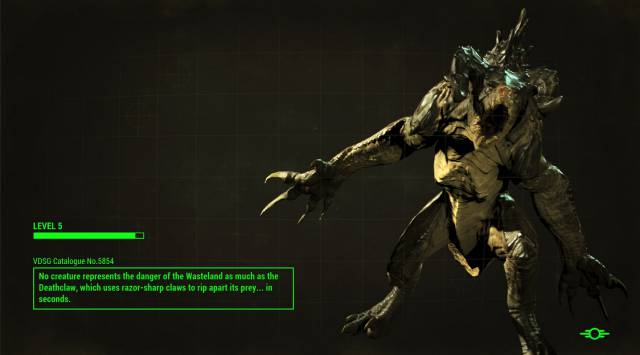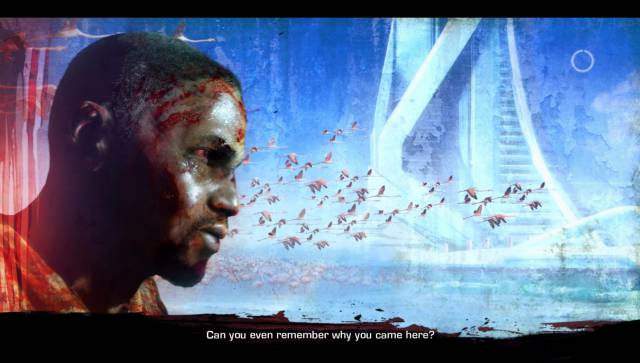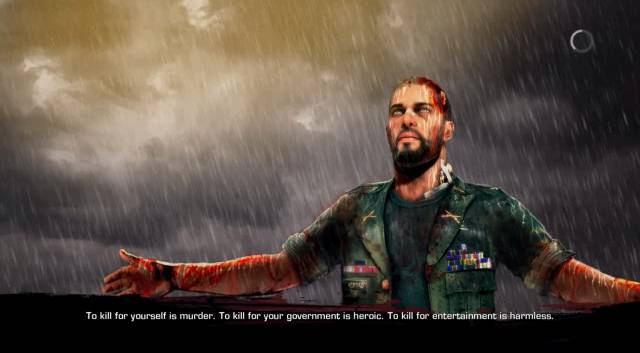
PS5 and Xbox Series X / S promise to end loading times, so we take a look back and see which ones were the best so far.
It seems incredible, but PS5 and Xbox Series X / S are already around the corner. There is little more than a month left for us to make the leap to the new generation and get to know first-hand the benefits of both platforms. Advantages that this time seem to coincide around its key element: SSD storage. Thanks to it, the waiting is over. Goodbye to loading screens between levels and dead times consulting your mobile. Starting in November, we will be able to go from one game to another in a matter of seconds thanks to such new features as Quick Resume. We can demand open worlds with less popping and more drawing distance. With more people and traffic. With more, more everything. And in turn, the respawn time is reduced. You die and reappear instantly. There are so many advantages that for Randy Pitchford, CEO of Gearbox (Borderlands), we are facing “the greatest generational leap in history”, even above the one that occurred when we went from 2D to 3D.
For that reason, these days we look nostalgically at each new “loading” we come across. We are that stupid. If we sometimes miss our ex, how could we not miss loading times. And we do it before these are even gone, so we’re doubly dumb. But think about it, what is the GTA saga going to be without its comic-like images and without those beats that made you move your neck as if you were in a Red Bull? When will Shaquille O’Neal, Kenny “The Jet” Smith and Ernie Johnson give us now the murga if we take away the load times of NBA 2K? How will our grandchildren look at us when we tell them about the Commodore 64 era and the thirty minutes (or more) we spent looking at colored stripes and testing our resistance to epileptic seizures? At that time you put the cassette in when your mother called you to dinner and if that when you got back you started (… to deal with the mistakes that would have been made, of course, not to play). Ains, what times (loading).

The mother of loading screens
Today at FreeGameTips we want to talk about that. One of the most iconic “Loading …” in video games. One of the most original and fun. But also all the types out there, as well as the tricks that have been used to try to hide them (because let’s face it: we have used the elevator in Mass Effect more times than the one in our block). And to open such a melon it is mandatory to remember Pac-Man’s mother, that is, Namco. Because long before joining forces with Bandai, when it was still called Namco Limited, the company registered as a patent the idea of putting minigames on loading screens. He did it in 1995 on the occasion of the launch of Ridger Racer on the first PlayStation. In its passage from arcades to console, the title grew fat and had to face heavy loading times, so to liven up the wait for the players, Namco decided to pull the file and introduced a Galaxian minigame, one of its great classics (often confused with Space Invaders). They weren’t the first to do it (there are examples going back over ten years, like 1984’s Skyline Attack or 1987’s Invade-a-Load), but they were the first to register the idea. For more than 20 years they have had the right to demand compensation from all who used this resource.
Until November 27, 2015, to put my games on the loading screens, you had to pay Namco, who registered the patent in 1995.
Since then, Namco games often feature appreciative loading screens that allow you to dive into the company’s history, like Tekken 5 (2004) with its own version of StarBlade (1991). Unfortunately, his patent scared and deterred many from doing the same for a time, preventing the idea from spreading and catching on. Most of the developers chose to ignore the loading screens and ate them as is. Those who paid attention did it simply to put small and anecdotal interactions or some kind of tutorial (later we will see several examples of both cases). Nothing worthy of comparison with Namco’s “minigames” (and therefore nothing worth a lawsuit). There were some exceptions, such as Onechanbara: Bikini Samurai Squad and that kind of arcade zombie that I had during “loading them” (which for many were better than the game itself), but these were exceptions that belonged to minor studies with which it did not deserve worth litigation.
As David Hoope (a lawyer specializing in video games) commented in a Gamasutra article, the benefits of these legal battles with small studios were minimal and there was a possibility that the situation would turn against Namco. With the passage of time it was shown that there are reasons to defend that the patent should never have been granted. If they were going to use her and endanger her it was at least worth it. In the case of Onechanbara it did not (especially considering that in 2009 its distributor, D3 Publisher, became part of Namco itself). In any case, and as we said before, until November 27, 2015, when the patent expired, Namco had a monopoly on loading screens with minigames. The industry had to evolve in different directions. Big companies avoided the issue, and by the time the patent was over, the idea no longer made much sense. Many had learned to hide these loads with various tricks (doors, kinematics, narrow corridors between two rocks …) and from now on, with SSDs, it seems that it will make even less sense, since they will disappear directly. So if this list is not bigger or does not have better examples, you know, remember the mother of Pac-Man.

Can a loading screen be better than the game you’re in? Anyone would say no, but with cases like Onechanbara’s …
Type 1: Training rooms
Not all loading screens are equally useless. In fact there are some where you want to stay and live. There they are, for example, those of the FIFA saga. As of FIFA 08, Electronic Arts let us practice with the ball as the matches finished loading. We chose our favorite player, the goalkeeper we wanted to fight with, and we appeared in a training field to play him one on one. Let everyone who ever avoided hitting the start button raise their hands until they scored. (We have all raised it, haven’t we?) This idea did not stop growing in options and possibilities. First, two people were allowed to play at the same time (one driving the striker and the other the goalkeeper) and years later, with FIFA 13, dozens of challenges and skill games were introduced. It is also the best way to learn dribbling, improve passing and crosses, or master free kicks and penalties. In company there are times that it is even more fun than the parties themselves.
There are many more examples of titles whose loading screen we can practice before starting the game, such as the MX vs ATV Reflex or Rocket League lobby. But if there is one that achieves perfection in that sense, it is Bayonetta. In a game that can be so technical and deep (depending on the difficulty we choose), Platinum Games gave us the opportunity to learn to master Cereza, the queen of hack and slash, in her loading times. In them came the entire list of combos, the exact buttons that we pressed and infinite enemies with which to train and test movements. As a tutorial it was so addictive and useful that when it came out on PC, where load times were shortened, many complained that they didn’t last longer. Option that by the way exists, because there was always a button (on PC it is the Tab key) that allows you to stay in that red limbo and polish the Umbra Witch’s pistols … and her hair.
Type 2: The Button Crushers
Let’s take an assumption. You’re looking at a loading screen and you press a button on the remote. You don’t know why you do it, but you press it. And suddenly something happens. A sound, an animation. Is there something more human in that situation than pressing the button again? And another, and another. Each time faster. To see if there is a limit; to see if the console can keep up with you. Surely there is nothing more stupid than biting yourself with a loading screen. But there is nothing more satisfying either. And companies know it. It happened in Devil May Cry 3 (2005), where you would see a black background and the letters “Now loading”. If we pressed the button for Rebellion we would cut both words, and if we pressed the button for Ebony and Ivory, we would fire them. Also, the more we did it the redder they got. It did not offer any reward nor did it have greater intriguing, but we were happy to stay.
There were simpler cases, such as Crash Tag Team Racing (2005), in which only an image of Crash appeared next to a kart and depending on the buttons we touched, belching or farts were heard in the background. In addition, the tone and duration of these depended on the position of the stick. Subtle. At the other end of the spectrum were those of Okami (2006), loading screens in which we could obtain rewards that were later useful in the adventure. They were of two types and had a more artistic and relaxing mood. One was based on hitting buttons like crazy, true, but the other consisted of pressing them at the exact moment. See if they earned a place in our hearts that, when the title was released on Wii a couple of years later, loading times were lightened and testing became impossible. One of them even disappeared. But the laments of the community were so deep and deep that their subsequent remasters recovered this section and offered it as an extra that could be activated from the game menu. Some of us are even capable of missing a loading time.

Okami was one of the few who allowed us to get useful items for adventure in the minigames on its loading screens. When they disappeared, the community clamored for their return.
Guy 3: Run Forrest, run!
Sometimes the solution to prevent us from picking up the mobile while charging and disconnecting completely is through something as simple as staying at the controls of the character. There may not be a lot to do with it, but as long as we can move or loosen up, many of us find it enough. In Assassin’s Creed it could be done during many installments and it is a pity that it was lost. Handling Desmond, Altair or Ezio in an empty space made all the sense in the world (since we were inside a simulator, the animus). Throwing our weapons infinitely or sprinting without getting tired was much more entertaining than watching a bar fill up, as in Odyssey. Along these lines, another that paid homage to the walking simulator was Rayman Origins and its sequel, Legends. In the loading screens of both, only the silhouette of the characters appeared against the light, but we could control them and we were allowed to run from one place to another with them. We didn’t have any kind of platform or test in front of us, but the simple fact of running as Forrest Gump was a delight, especially in such a fluid and agile game. Not to mention the icing on the cake: that your friends showed up and you could drop them a cookie or another cake.
The alternative to these loading screens would be those that, although they do not let us handle the character, they do allow us to dive into their inventory and equipment. Those that allow to gather forces and resources before the battle. From Destiny, where we can tinker with everything we carry, to NBA 2K, which takes the opportunity to encourage us to adjust the rotations, defensive pairings and the starting lineup. I wish movements and menus weren’t at odds.
Type 4: The News
4.1 Information as bait
The academic model. The most classic and common. The screens that while loading offer us tips and information about the game. It is the one that has prevailed, the predominant one, but within it there are also many examples and types that are worth rescuing. For example, there are the sagas like The Elder Scrolls and Fallout, whose latest installments showed us at those moments our level, our statistics and a three-dimensional model (that we could rotate to our liking) of some of the most interesting and striking enemies and objects of all the game. A way to bite us to continue playing, not to leave the spell of its universe and go in search of what we have just seen. Looking at a bloodthirsty glove on the loading screen, we felt the same as Audrey Hepburn looking through the Tiffany’s window. It was what kept us going, why we kept going.

The Fallout series lays a bait on its loading times. It shows us things that we feel the need to discover (and confront).
4. 2 Extra information
This type of information screen also includes titles that share things … “different”. They are not interactive and their information lacks purpose and function, it is useless, but at least they show unique things about the game that can only be seen in them. One example is the Splatterhouse remake, which featured the monsters in the title fighting each other. Useful? Not too much. Fascinating? As much as the first time one sees the sea or the snow. Another good example of this would be the Batman Arkham game over, in which, while we were brought back to life and we waited for the respawn, a villain was joking about our death and released his particular little speech. But without a doubt the most important were those of Spec Ops: The Line. At first their uploads only provide us with advice, but as we progress in the campaign and as we discover their anti-war message, the images that come out and the warning phrases are intensifying. At times they broke the fourth wall and appealed to the viewer and their social conscience. A dialogue was generated between the player and the loading screens.



The evolution of the loading screens in Spec Ops: The Line was devastating. From giving advice to … judging ourselves. And not as a player, but also politically and as people.
4.3 History information
Third would go those that advance the story with something that looks like a cinematic, but is not. It is actually a loading time. The best example of this are the first Call of Duty: Modern Warfare by Infinity Ward, in whose loading screens we saw a world map that went from one place to another and we listened to a conversation on the radio. It wasn’t a graphic display at all (just a couple of images, some movement and a voice), but you couldn’t do more with less. It kept us hooked, aware of the story and the dialogue, which used to end with the loading time. There are dozens of such examples. Dozens of games that used this method and hid their respective charges behind what appeared to be narrative sequences. Other cases that come to mind soon are those of Shadow of Mordor (with flashbacks) and The Darkness saga (and especially its sequel, The Darkness 2), in which before each level, Jackie Estacado he was giving a monologue about his life. There was no stage. It was just his character sitting in a chair and talking to the camera. They are to history and true cinematics what improvisation is to theater. Although at home, sometimes it turned out well.
4.4. Information about own loading
Finally, the informative loading screens that offer the most important data are those that tell us how the loading is going and how much is left. Those that give numbers and percentages. But there have always been different classes, styles and ways of doing things, of course. It is not the same to put a bar filling up and a number next to it than to put Solid Snake himself smoking a cigarette and showing off the PlayStation 3 graphics. It was more installation than loading time, but it’s the same, it can’t be more cool than Snake in Metal Gear Solid 4: Guns of the Patriots. Uncle just said “Kept you waiting, huh?” at the end of loading time for us to howl like a groupie and spare him the previous half hour of Malboro publicity. But there have been many cases just as curious, such as the Halo 3 charges, in which a halo was forming and we intuited how much was missing depending on the state of it. And here you are going to allow us the license of Pikmin, because the next loading time that we are going to show is not within a game, but when moving your saved data, but beware of the care and affection behind it. I said, there are ways and means of doing things.
Type 5: Doors, corridors and elevators
The top floor of our particular shopping center is dedicated to the home, and more specifically to doors, corridors and elevators. It is the fashion section and the most false and elusive. Today most studies resort to it because – delusions – they believe that this way we will not realize that we are on a loading screen. But let’s face it, it has been used since the doors of Resident Evil, which already in 1996 used its animation to buy some time while the adjoining room was loaded. And who says those of RE also says those of Metroid Prime (which took a couple of seconds to open even having fired and activated them). Or those of Uncharted and The Last of Us (how many times have we raised a gate or a gate in Naughty Dog titles by pulling chains or through quick time events?). Let’s see if you think that using the lancer in Gears of War to saw the guts of some doors was something that they forced us to do five hundred times because its developers believed that there was nothing more fun. In any case, and even being aware of what they are, it is very entertaining to see their evolution and the amount of details that have been introduced to be more credible.
Between the identical tunnels that separated the levels of Tony Hawk’s American Wasteland and the snake holes of Darksiders (which served the same purpose) there is no color. Nor is there between these and the mystical accesses of God of War. All three are corridors that separate levels. Random and repetitive corridors that hide loading times in the background. But it is fascinating to see how they have grown in pampering and details (they are from 2005, 2010 and 2018, respectively). The corridors that Kratos travels through have more work behind them than some main levels in other games. And that’s talking about elaborate corridors, because sometimes they are reduced to a tiny space between two giant rocks. For these, it is enough to design the texture of their walls and the animation of Nathan Drake, Lara Croft, Ellie or whoever you want to advance between them very slowly, lest they catch the rest of the level in panties. The same goes for the typical elevator sequences, which have been with us for decades (look at Destructoid’s list of mythical elevators). Bioware took good note of our time as bellboys in Mirror’s Edge and found that if you swapped the mall musical accompaniment for characters who don’t shut up or underwater, like those in Mass Effect, it goes into a new dimension. Nothing like going up and down with Wrex and the racist Ashley. It is likely that this generation of this type is the most common and that some load times are designed so worked that they even go through normal levels. Then players will form their own team of blade runners to identify these replication levels based on questions and … yeah, well, we stopped.
Special mentions
Documenting for the article, looking for loading screens that were especially colorful or eye-catching, there are three examples that were repeated over and over again in the comments of forums and videos. We want to close with them. The first two agree on the reason for their mention. They are the loading screens for Fantastic Four (1997 game for the original PlayStation) and Test Drive (2007, for PS2, Xbox and PC). Both were two heroines who skipped the Namco patent and allowed us to enjoy mini-games while we waited. The Fantastic Four was a slot minigame, car racing on small circuits with a bird’s eye view, like those later offered by Pixel Junk Racers or MotorStorm RC. Test Drive was even more downloaded and directly included Pong games. Two titles of rebellious soul that were burned into the retina of fans, at that time not very used to having fun while they finished loading the levels.
The third most cited name is that of the Dragon Ball Z saga (and especially Budokai), as its games were loaded with interactive tests and challenges. That if we eat the maximum number of dishes possible with Goku, that if we see how many push-ups we can do with Vegeta, eliminate all the possible rocks with Yamcha’s ki, see how many saibaman we could make emerge from the earth by crushing the joystick, and so on. They became a constant in the saga throughout a lot of installments and platforms. When you bought a new Dragon Ball game, you expected combat and dragon balls, yes, but also such loading screens. We say goodbye with a review of all the ones you had during the PlayStation 2 era, but not before inviting you to share with us on networks your favorite loading screens and those that you have no forgiveness that we have forgotten to include. Share that and if we are not alone and some of you will also miss the loads … and your ex.

